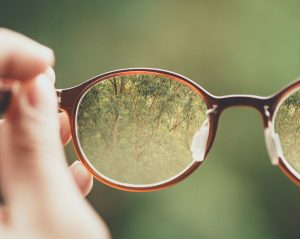Billions of people across the globe need eyeglasses to drive a car, read a book, watch television, and perform a host of other tasks of daily life. Although glasses are highly effective, people who wear them understand they may have to make a few concessions while doing so. Unlike contact lenses, which sit directly on the eye, glasses rest on the bridge of the nose. They may slightly impede peripheral vision or even slip down if not properly fitted. Those accustomed to wearing glasses in the cold weather understand fogging of the lenses is a nuisance they may be forced to confront. That nuisance became even more profound when masks became a must-have accessory to help curb the spread of the COVID-19 virus.
Glasses may fog due to the formation of condensation on the lens surface, which happens when moving from a cold outdoor environment into a warm indoor one. This is a problem that has affected eyeglass wearers for some time, including health professionals who often wear masks. The issue has become even more widely known due to the sheer number of people who have been wearing face masks as a public health safety measure. So how does one counteract the condensation and fogging that occurs from both winter weather and increased mask usage? There are a few different methods, but eyeglass wearers should always consult with an optometrist to verify the safety and efficacy of any method before trying it.
Use soapy water
A 2011 study published in the Annals of The Royal College of Surgeons of England found that washing eyeglasses in soapy water and shaking off the excess can help reduce fogginess. Afterward, let the spectacles air dry before putting them back on. The soapy water leaves behind a thin surfactant film that reduces surface tension and causes the water molecules to spread out evenly into a transparent layer. This can help prevent fogging.

Use a commercial product
Antifogging products are widely used to prevent fogging of scuba masks or ski goggles. Get a mask that fits tightly Make sure the mask fits securely over the nose, advises The Cleveland Clinic. Also, a mask with a nose bridge will help keep warm exhaled breath from exiting up to the glasses. Use your glasses to help seal the mask on your face by pulling the mask up higher on the nose.
Block breath with a tissue
The AARP suggests placing a folded tissue between your mouth and the mask. The tissue will absorb the warm, moist air, preventing it from rising up to reach the glasses.
Adjust the fit of glasses
Choosing glasses that sit further away from the face can improve air circulation and reduce the formation of condensation.
Consider other options
If these tricks seem like a lot of work, you also can speak to an eye doctor about contact lenses or eye surgery.




